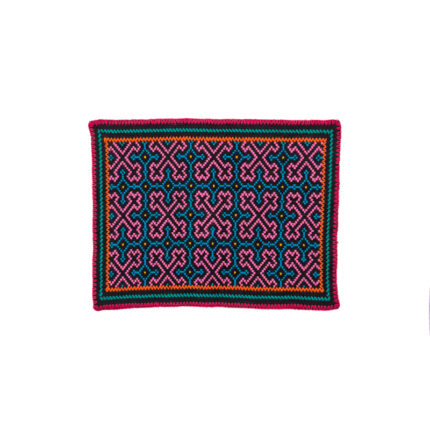Altar Cloth – 4 Directions – Q’ero Tawa
CHF 75.00 Original price was: CHF 75.00.CHF 67.50Current price is: CHF 67.50.
- Altar cloth, Mesa, Tawa, ritual cloth
- Handmade and handwoven textile by the Q’ero people from Cusco, Peru.
- Traditional Andean textile that expresses the deep connection with the four elements of nature.
- Decorated with symbols of air, fire, water and earth, which are central to Andean cosmology.
- Unique piece that can be used for ceremonies, rituals and meditations.
| Weight | 80 g |
|---|---|
| Dimensions | 34 × 41 × 0.5 cm |
| Origin | |
| Tribe | |
| Color | , , , |
| SKU | 5005 |
Out of stock
This product is currently sold out.
No worries! Enter your email, and we'll let you know as soon as it's back in stock.
The Q’ero Four Elements Mestana Altar – Tawa Cloth is a traditional Andean textile handmade and handwoven by the Q’ero people of Cusco, Peru. It is an artfully designed piece that expresses the deep cultural connection of the Q’ero with the elements of nature and its spiritual practices. This mestana, also known as the altar cloth, is decorated with the symbol of the Tawa, the four elements – air, fire, water and earth – which play a central role in Andean cosmology. Each element is represented with special patterns and colors that symbolize the harmonious relationship between man and nature. The Tawa Cloth is not only an aesthetic work of art, but also a spiritual tool that can be used for ceremonies, rituals, and meditations. It radiates a deep energy and serves as a connection point between the physical and spiritual realms. Each piece is unique, made by skilled Q’ero artisans using traditional techniques. By purchasing this product, you are not only supporting the preservation of the traditional craftsmanship of the Q’ero, but also the indigenous community in the Peruvian Andes. In Andean cosmology, the four cardinal directions – north, south, east and west – and the colors associated with them have a deep symbolic meaning:
- North (White): The North is often associated with purity, clarity, and spiritual guidance. White also symbolizes the snow of the high peaks of the Andes and the purity of the spiritual world.
- South (Brown): The South is connected to the Earth and the physical body. Brown represents the fertile soil, the basis of life for people and the source of growth.
- East (Black): The East stands for new beginnings, renewal and the beginning of a new day. Black also symbolizes the night and the mysterious darkness from which the light of the sun emerges again.
- West (Grey): The West is associated with evening, twilight and sunset. Gray represents the transitional period between day and night, between life and death, and often also symbolizes the water that flows in the west.















Reviews
There are no reviews yet.